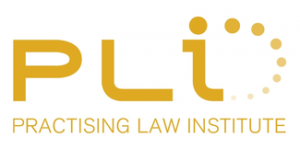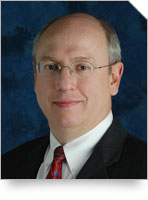Don’t Miss the Post-Grant USPTO Proceedings Seminar Next Week!
 On Monday, February 3rd, PLI is hosting a seminar in New York City focused on the role of post-grant USPTO proceedings as components of a litigation strategy, including pre-trial and post-trial options. The seminar is entitled Post-Grant USPTO Proceedings 2012 – The New Patent Litigation, and it will focus on strategic considerations and common procedural traps for the unwary. The relative advantages and disadvantages of the various proceedings are explained from both the perspective of the Patentee and Third Party. Perspectives of the judiciary will also be presented, including case studies of well-known disputes, as judges from the U.S. District Court, the ITC, and the USPTO Board of Patent Appeals and Interferences (BPAI) are all members of the faculty.
On Monday, February 3rd, PLI is hosting a seminar in New York City focused on the role of post-grant USPTO proceedings as components of a litigation strategy, including pre-trial and post-trial options. The seminar is entitled Post-Grant USPTO Proceedings 2012 – The New Patent Litigation, and it will focus on strategic considerations and common procedural traps for the unwary. The relative advantages and disadvantages of the various proceedings are explained from both the perspective of the Patentee and Third Party. Perspectives of the judiciary will also be presented, including case studies of well-known disputes, as judges from the U.S. District Court, the ITC, and the USPTO Board of Patent Appeals and Interferences (BPAI) are all members of the faculty.
Registration is still open for the seminar. Registration includes a course handbook and associated course materials. A downloadable course handbook will also be available several days prior to the program start for your review. Won’t be in the New York City area next Monday? This upcoming seminar is also available via live webcast! The seminar, co-chaired by Oblon Spivak’s Scott McKeown and Birch Stewart’s Gerald Murphy, is one that should not be missed. The Patent Law Practice Center will keep you posted on the seminar throughout the day as we will be live blogging as well as tweeting from the seminar (hashtag: #PLIpostgrant).
Teva v. AstraZeneca – Does an Inventor Need to Understand How a Prior Invention Works in Order to Have that Prior Invention Defeat Another’s Patent?
 Written by Gerald M. Murphy, Jr., Partner at Birch Stewart Kolasch & Birch, LLP
Written by Gerald M. Murphy, Jr., Partner at Birch Stewart Kolasch & Birch, LLP
On December 1, in Teva Pharmaceutical Ind. Ltd. v. AstraZeneca Pharmaceuticals LP, the Federal Circuit explained when a secret invention can be considered “made” (or conceived and reduced to practice) so that it can be used as prior art against a patent. Briefly, the CAFC held that an invention can be considered “made” if the inventive entity “did not do so by accident and it knew what it had made.” It is not necessary for the prior inventor to “know everything about how or why its invention worked.”
12.12.11 | CAFC, Federal Circuit Cases, posts | Mark Dighton


No Comments
01.25.12 | PLI Patent Programs, Post Grant Review, USPTO | Mark Dighton